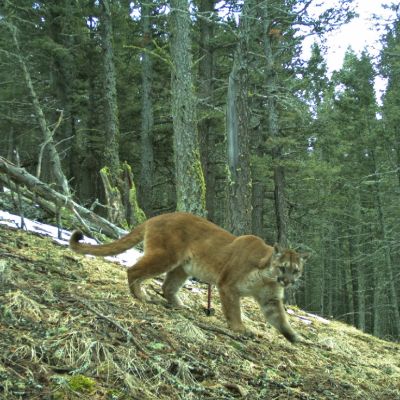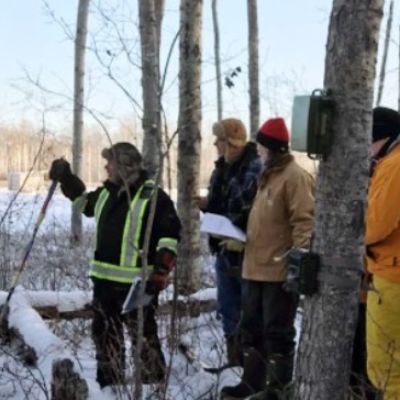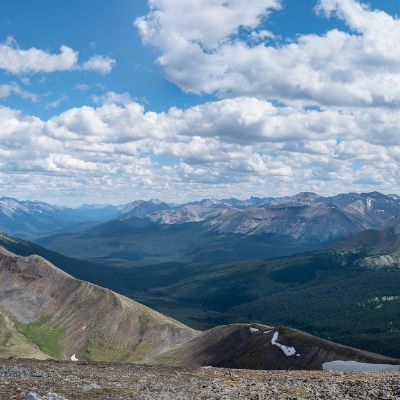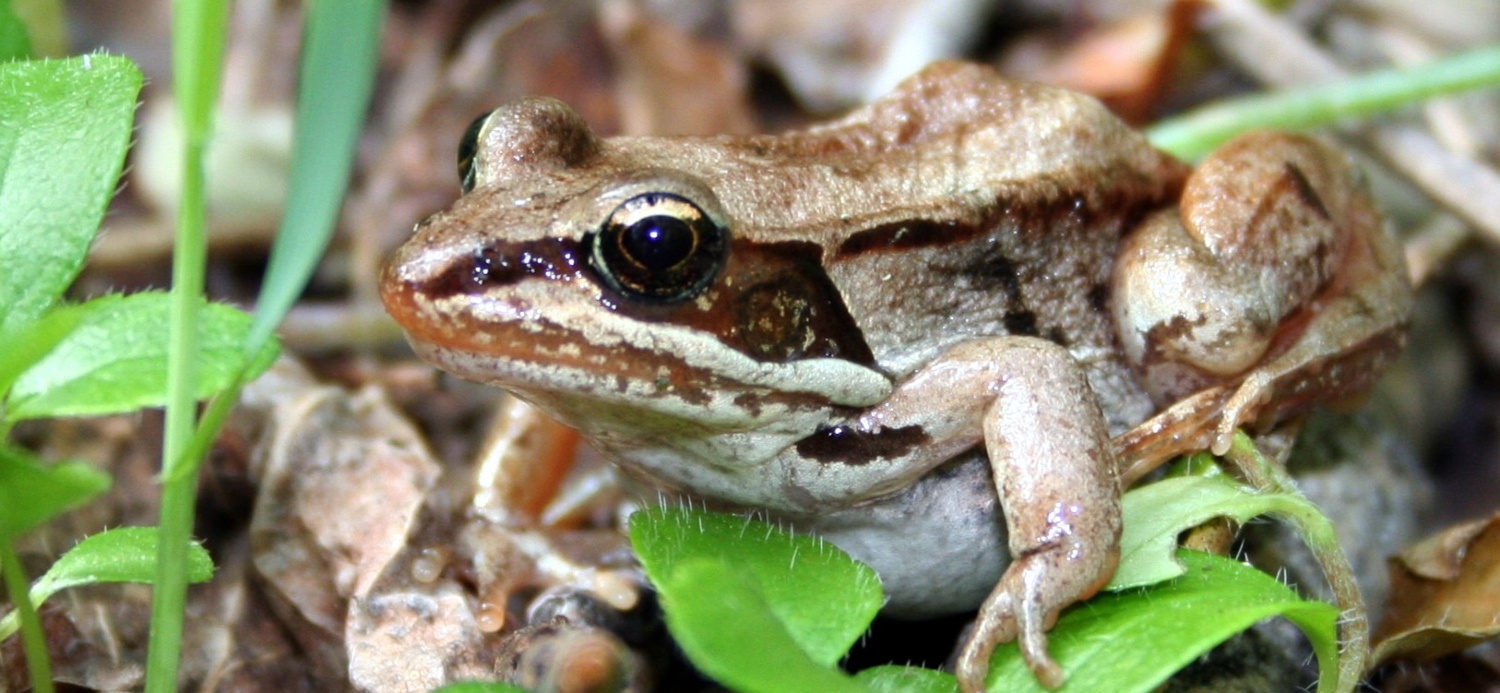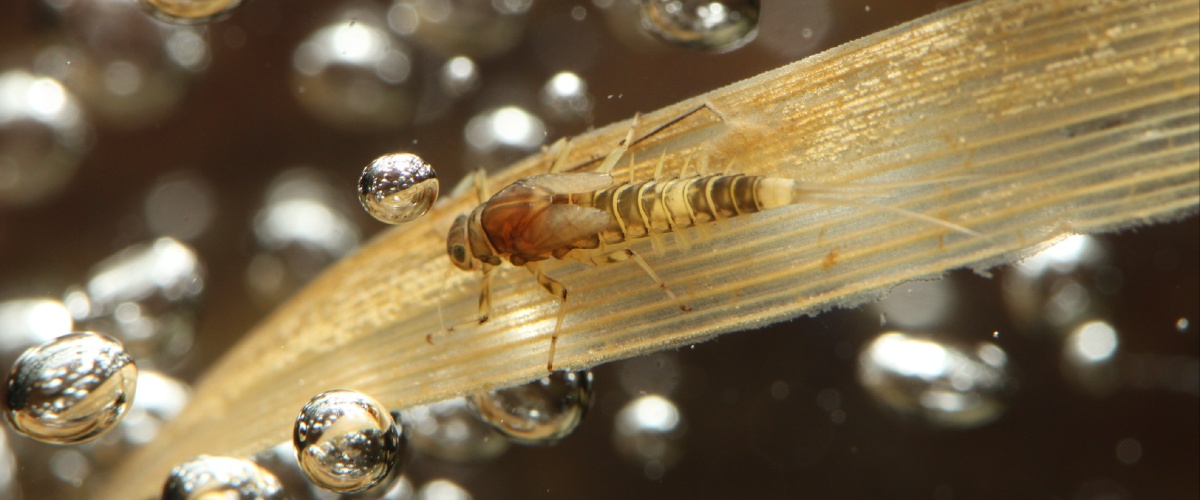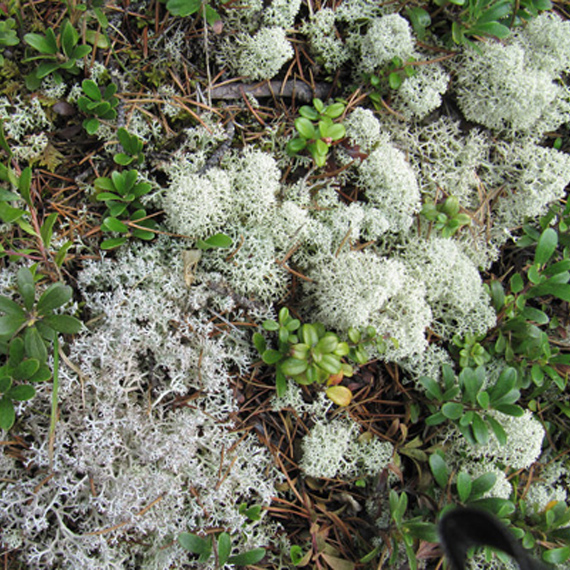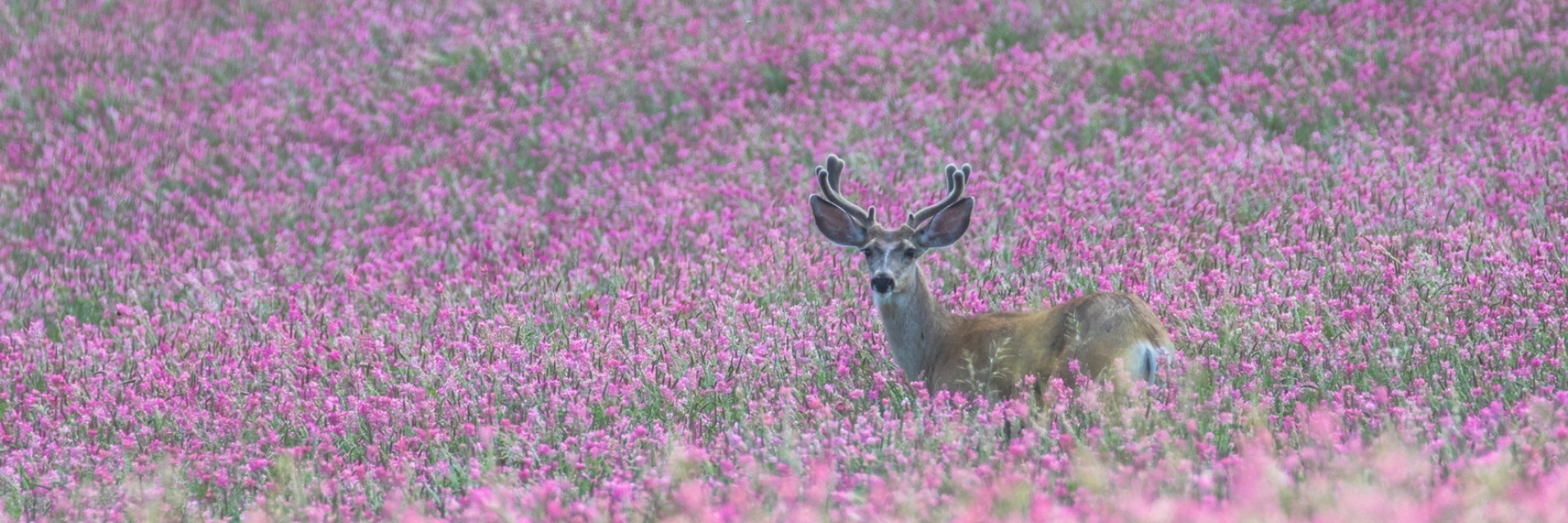
Mammals
There are over 80 mammal species in Alberta, ranging from tiny voles to the mighty moose.
When we think of wildlife, we often think of mammals. There are over 80 species of mammals in Alberta. They can be habitat specialists, such as pronghorn with a preference for native grassland, or generalists, such as white-tailed deer that use a variety of natural and human-created habitats.
There are over 80 mammal species in Alberta. This includes many well-known species that are emblematic of the Canadian wilderness, such as Beaver, Moose, Canada Lynx, Grizzly Bear and Gray Wolf. Learn more about them in the ABMI's Biodiversity Browser and access our monitoring data and analysis.
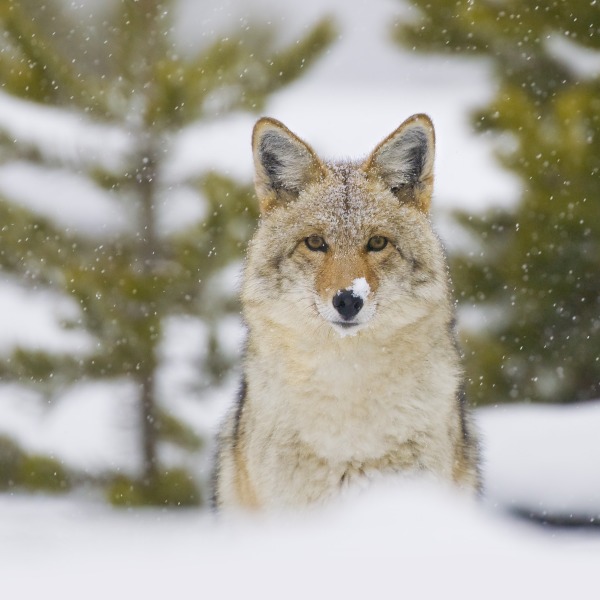
Wolf (Canis Latrans) Photo: Hal Brindley
Monitoring Mammals
We monitor mid- to large-sized mammals using remote cameras deployed at terrestrial and wetland sites across Alberta. Every year, we collect tens of thousands of images of mammals using wildlife cameras set up across the province.
The Status of Mammals
The data we collect is used to determine habitat use, distribution, and the current status of mammals, as well as monitor changes in mammal populations over time and space.
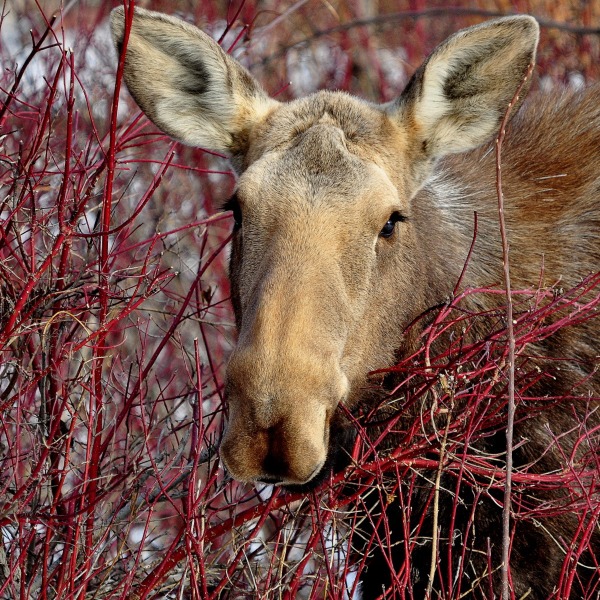.jpg)
Moose (Alces alces) Photo: Arnold Janza
Workflow
We set up multiple remote cameras at each ABMI monitoring site. Field crews set up cameras sometime between mid-fall and the end of March; the cameras then collect both daily and motion-triggered images until the day they are retrieved. Cameras can remain in the field for multiple years, with periodic visits from field crews to replace memory cards and batteries. Cameras are positioned on trees or objects, such as metal posts, to collect images of mid- to large-sized mammals.
After cameras or memory cards are retrieved, the images are uploaded to WildTrax, where information such as species and the number of individuals is tagged to each image. We can use this information to understand the distribution and habitat use of mammals across the province. Based on species-habitat associations, we can predict how the abundance and distribution of a given species may change as land cover changes due to human activity or natural events (e.g., forest fires).
As a member of the Alberta Remote Camera Steering Committee, we are actively contributing to the development of provincial standards for guidelines for remote camera use and metadata. The most up-to-date metadata standards can be found in the Resources section of WildTrax.
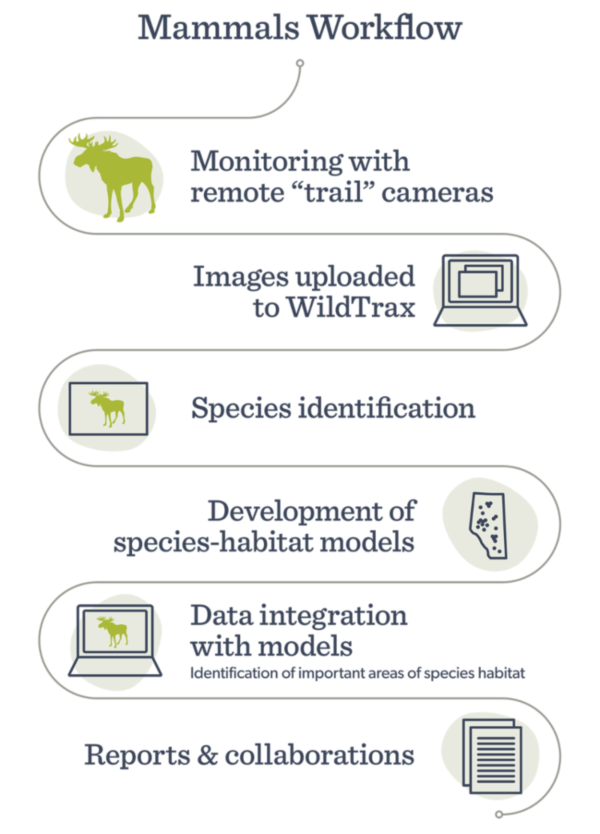
The Alberta Remote Camera Steering Committee (RCSC) is building scientific understanding and effectiveness of remote camera surveys to benefit a broader network of remote camera researchers and practitioners in western Canada.
NWSAR supports the acquisition of new and more accurate data related to caribou and deploys remote cameras and autonomous recording units to collect data on ungulates and predators in two Woodland Caribou ranges in northwestern Alberta.
Led by Alberta Environment and Parks and the Grande Cache Trails Working Group, this project’s goal is to collect information on recreational use and wildlife in the Willmore Wilderness Park and nearby public lands.
